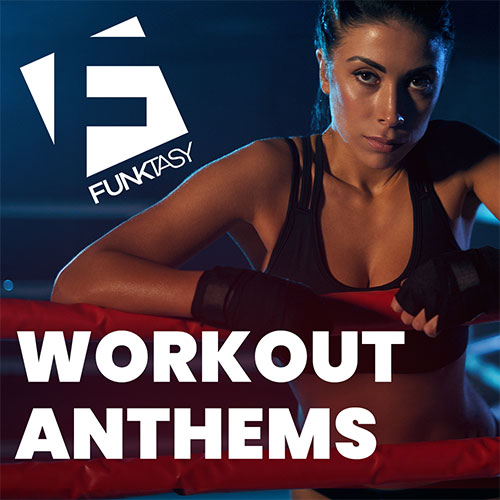Though it has been discontinued for some time, the SSL 4000 Series of mixing consoles remain in high demand in the second-hand marketplace.
Why this is has everything to do with the impact that the SSL 4000 Series on music had throughout the 1990s and 2000s.
Solid State Logic, the brainchild behind its design, have made the claim that the 4000 Series consoles have mixed more platinum-selling albums than all other consoles combined and they may not be wrong. Here are some of the top users of the SSL 4000.
- Bob Clearmountain (a mixer for Bruce Springsteen, Bryan Adams, Bon Jovi, Ricky Martin, Sheryl Crow, and Demi Lovato).
- Chris Lord-Alge (a mixer for James Brown, Prince, Chaka Khan, Madonna, and the Smashing Pumpkins).
- Tom Lord-Alge (a mixer for Santana, U2, Pink, Avril Lavigne, Marilyn Mansion, and others).
- Alan Moulder (a mixer for The Killers, Arctic Monkeys, Royal Blood, and Foo Fighters).
The Origin Story Of The SSL 4000 Console
While these days, mixers and musicians hear more about the SSL 4000 G +, Softube SSL 4000, and SSL compressors, all of this equipment and their characteristics can be traced back to the original SSL 4000 console.
First developed in the mid-1970s, the 4000 Series originally came about alongside the first SSL studio computer. It was between these two inventions that much of Solid State Logic’s fortune was built in the decades years that followed.
The SSL 4000 was built by Colin Sanders for Acorn Studios, a recording studio in Stonesfield, Oxfordshire. He built it as an upgrade on recording consoles of the time, adding flexibility and settings that never previously existed. That was the SSL 4000 A Series and only two of the consoles were made.
From there, the company really started to develop and then redevelop the SSL 4000 console.
SSL 4000 B Series
The SSL 4000 B Series was introduced in 1976. The very first was purchased by Abbey Road Studios in London, UK, followed by purchases by Le Studio in Canada; Kendun Recorders in Burbank, California; and Virgin Records’ Townhouse Studios also in London, UK.
SSL 4000 E Series
The SSL 4000 E Series hit the market in 1979 which added features like centralized signal processing, machine control, fader automation, and Total Recall which was a setting to save settings onto a floppy disk.
The E Series was the first console in the world to provide a compressor/gate on every channel and a master bus compressor, and featured a new 4-band EQ that came about from a collaboration with famed Beatles producer George Martin.
By the 1980s, 4000 Series consoles were everywhere and usually was the console used by any major commercial recording studio.
SSL 4000 G Series
Lastly, the SSL 4000 G Series was released in 1987, offering further improvements including a redesigned EQ.
The SSL 4000 Series was so popular that over four-fifths of all number-one singles in the 1990s are estimated to have been done with one of these boards.
Subsequent years saw the release of a 5000 Series, 6000 Series, and 8000 Series specifically targeting submarkets, i.e. film, general video, and broadcast recording.
Though the SSL 4000 console is commonly associated with pop and rock music from the pre-2000s time period, the mixing console has also played a major role in the development of hip-hop. Tupac’s “All Eyez On Me” was mixed on the SSL 4000 and Dr. Dre, among others, used it regularly to put together some of his greatest mixes.
Key Features Of The SSL 4000 Mixing Console That Made It So Damn Spectacular
If there had been no SSL 4000, a lot of what we consider to be the classics from the pre mid-2005 time period would not exist in the form that they do.
The 4000 series was the first mixing console of any kind to integrate a studio computer system with an inline audio console, allowing for a leaner, cleaner production sound.
SSL mixing desks proved to be irresistible to mixers who wanted them for their high tech and flexibility. Among its features, there is the punch master bus compressors, an aggressive and melodic EQ section, and features of automation, routine, and computer control that people today think of as a necessity in mixing. Nearly all of this came about from the design of the SSL 4000 console.
SSL 4000 Consoles Ceased Manufacturing In 2002
Yes, sadly, they do not make SSL 4000 Series consoles anymore and have not for over two decades.
Even so, second-hand SSL 4000s are still in high demand and continue to be used at studios all over the world, including Le Studio in Montreal, Tree Sound Studios in Atlanta, Sonic Ranch Recording Studios in Texas, 2noisy Studio in Spain, and Abbey Road in London.
Even today, with Solid State Logic plugins being used in DAWs and digital recording, the SSL 4000 still plays a role in shaping a lot of music for at-home producers, engineers, and mixers.
In terms of where the SSL 4000 is at presently, most producers only know it by its reputation and the several SSL digital plugins that attempt to imitate its sound. These plugins have helped everyone from Soundgarden to 50 Cent achieve massive success, supporting the recording and mixing of some huge records.
In a way, the 4000 series lives on both digitally and in the music that it produced, some of which is still shared on radio today.
As a mixer, it’s important to know where this stuff comes from and how this stuff was built. The SSL 4000 console has fulfilled the dreams of generations of artists from so many different worlds. Today’s top studios continue to use its plugins regularly – the rich EQ band, exquisite filters, dynamics, compressions, and gates.
For today’s production sounds, some of it does correlate directly with the SSL 4000 series, and for the mixers who are hip enough to still own one of its analog boards, the SSL 4000 experience is still one that is entirely original and unique.








